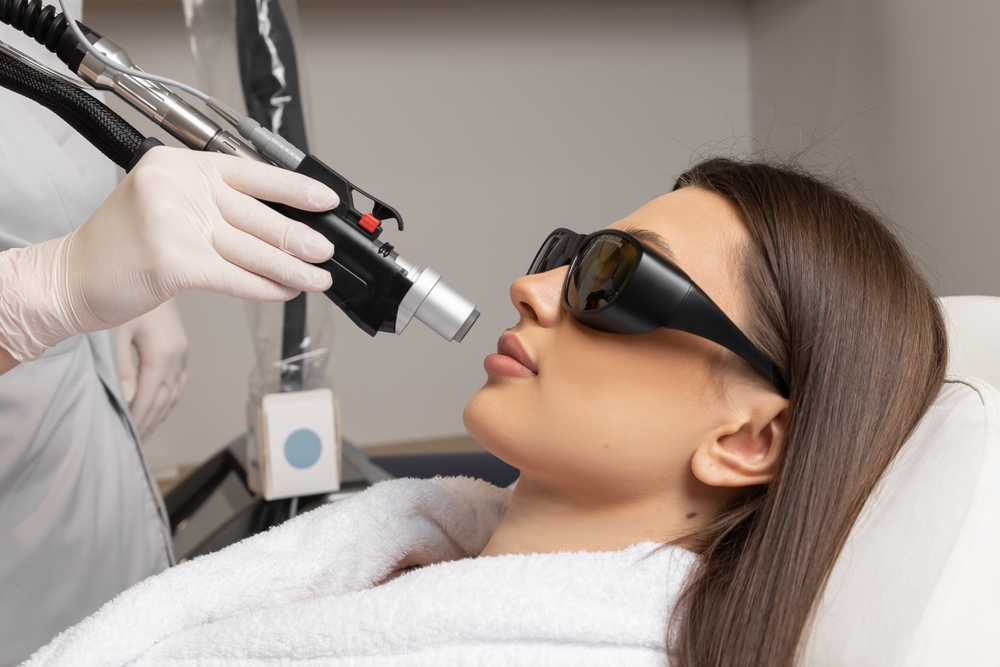
Laser Hair Removal Technology and Treatment
Skin Medical’s laser hair removal procedure has been used to remove hair for over a decade.
The machine that we use is the Lumenis Lightsheer diode system.
It has been approved by the USA’s Food And Drug Administration (FDA) for the achievement of safe and effective permanent hair reduction.
Skin Medical is registered with the UK’s Care Quality Commission (CQC) and complies with the Health And Social Care Act 2008 (Regulated Activities) Regulations 2010.
Send an Enquiry
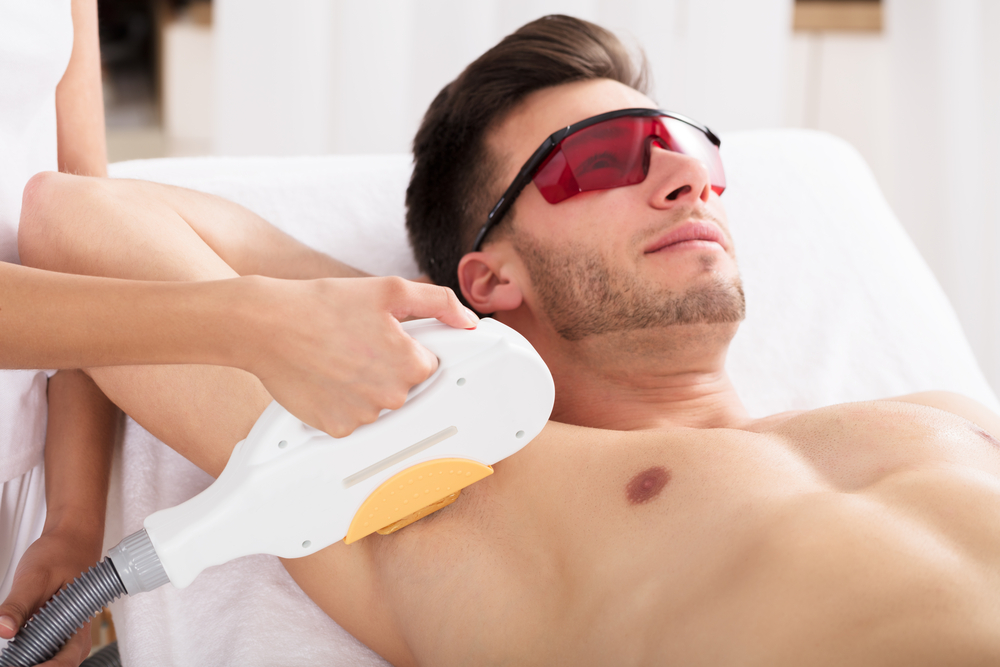
Laser hair removal technology
Laser light is designed to target the pigment in the hair, known as melanin. The laser light then transmits light energy to the hair root where it converts this energy into heat that damages and disables the hair follicle, thus stopping the hair from growing back.
Melanin exists in both hair and skin, but the frequency of the laser is such that it only targets the melanin in the hair. The scientific name for this principle is selective photothermolysis (SPTL).
The type of technology and equipment used are essential factors in achieving and maintaining a satisfactory result. Many high street beauty salons and cosmetic centres use low-specification IPL (intense pulsed light) machines, which have limited success. Patients who have previously used IPL have noted that they found that it did not result in permanent hair removal, that success was limited, and in some cases that it stimulated hair growth or caused skin damage.
Skin Medical’s expert practitioners use diode lasers for hair removal: the LightSheer ET and the Lumenis One. Diode lasers are widely believed to be the safest and most effective models in existence. These particular models have an excellent reputation in the industry, regarded as the ‘gold standard’ in laser hair removal.
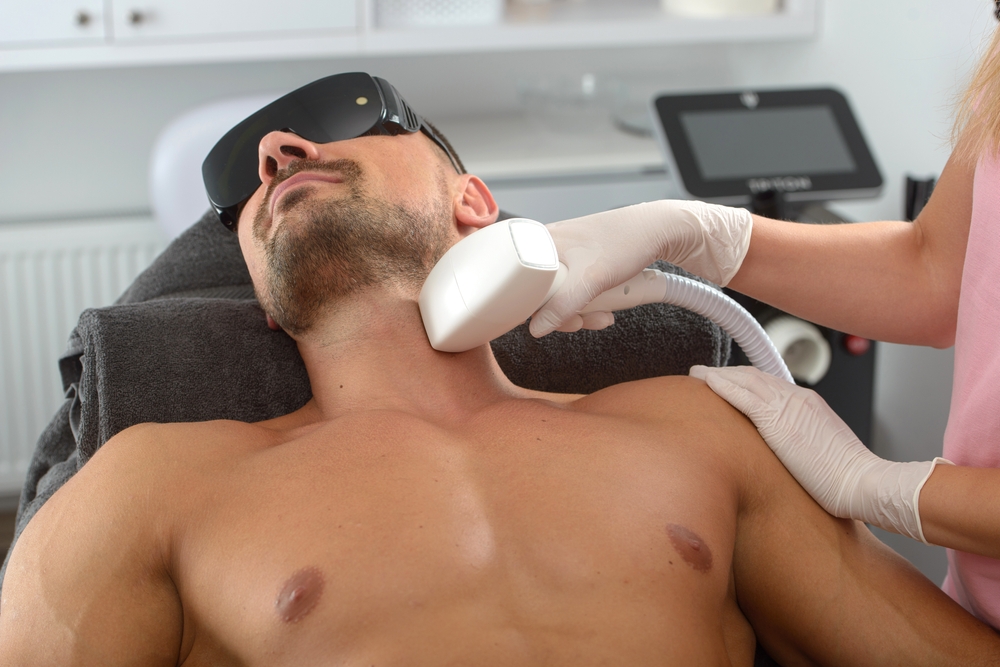
Cool tip technology
Skin Medical’s Lumenis diode lasers use cool tip technology, which makes the procedure far more comfortable for patients. As the laser is applied to the skin, the gentle, cooling contact reduces the sensation caused by the laser light.
Other advantages include:
- Reduced recovery time – A diode laser uses pulses of light instead of a continuous beam. This means the targeted hair follicle is heated more quickly but the surrounding skin is exposed to smaller amounts of heat. The treatment area therefore recovers more quickly.
- Dark skin treatment – Due to high levels of melanin in darker skin, it can be difficult to treat hair with lasers without affecting the skin around it. Because the diode laser has a longer wavelength than most lasers, it penetrates more deeply and safely and is less likely to damage the skin.
1.
ENQUIRE
Call, message, or pop in at our clinic and speak to our welcoming team.
2.
CONSULTATION
Attend a consultation to see which treatment is right for you.
3.
APPOINTMENT
Sit back and relax in the care of our skincare professionals.
4.
AFTERCARE
Get the best results from your treatment with our aftercare solutions.
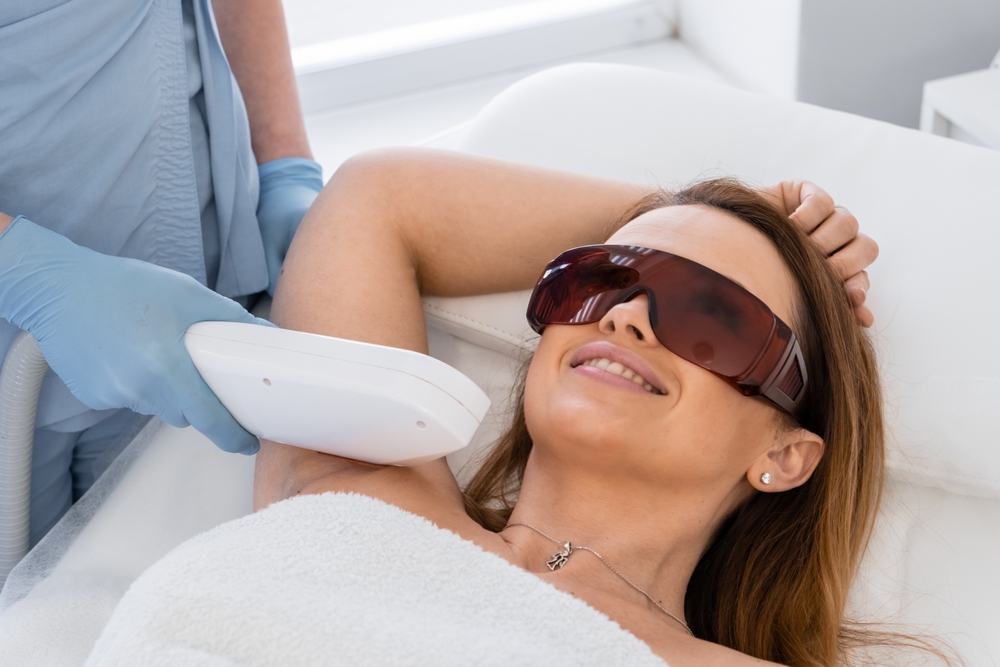
Treatment
An initial course of 6 treatments is usually recommended, with treatments spaced around 4 to 8 weeks apart.
Facial treatments are usually more frequent as the hair regrows faster than hair on the body.
Towards the end of the course, breaks between treatment will become longer as the speed of hair regrowth will have substantially decreased.
The length and cost of each procedure varies depending on the size of the area being treated, with the average treatment time being 30 minutes.
In smaller areas, such as parts of the face or neck, the actual procedure can take as little as 5 or 10 minutes. For the full body, treatment time will be three hours but this will be split over two 90 minute sessions.
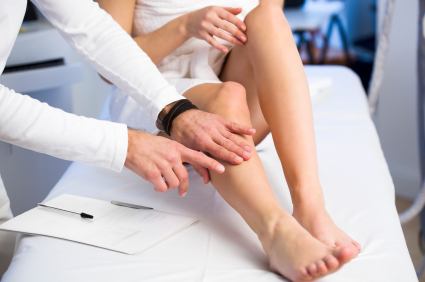
Results
Hair reduction is sometimes immediate, but most of the results should become apparent within three weeks of treatment and can be assisted by gentle exfoliation – such as using a loofah or washcloth in the shower.
Any apparent new growth that occurs in the 10 days after the treatment is actually dead hair that will soon be shed.
Any new growth that occurs after about 15 weeks will be the next set of hair, which comes from the untreated follicles from other phases of growth.
This means that it is time for further treatment.
FEEL CONFIDENT IN YOUR SKIN
Our skin clinic specialises in a range of treatable conditions, from acne to wrinkles, and everything in between.

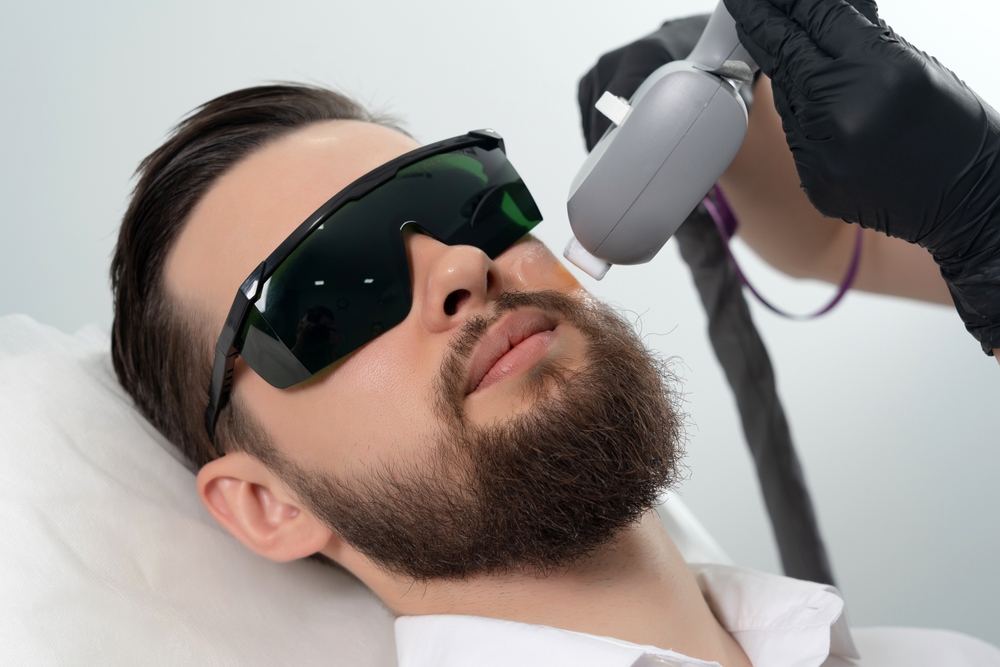
Preparation
There are several steps you can take to make the process more comfortable and achieve better results.
These include:
- Informing your Skin Medical consultant about any medications or other treatments you are receiving.
- Avoiding sun exposure and tanning machines for 8 weeks beforehand.
- Not using fake tan prior to treatment.
- Not bleaching any hair.
- Not waxing, tweezing, plucking or threading, or using depilatory creams or electrolysis (as the hair must be in the follicle for treatment to work).
- Not exfoliating skin for a week beforehand, as this can make skin sensitive.
- Avoiding alcohol and aspirin for 24 hours before the procedure.
On the day of treatment:
- You should not use any perfumed soap or moisturisers on the skin.
- Ensure that the treatment area is closely shaved.
- Any make-up should be removed prior to treatment. Facial wipes are available at the clinic.
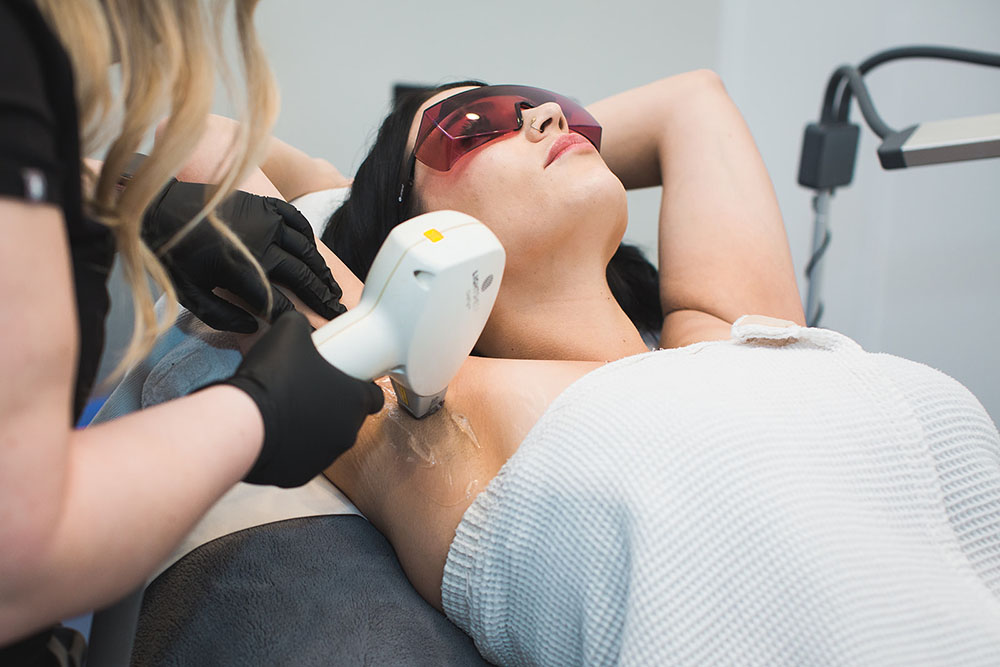
The procedure
Skin Medical’s clinical professionals ensure that laser hair removal is a quick, safe and straightforward process. You will be provided with goggles to protect your eyes from the laser light. The practitioner will ensure that the laser is set to the correct setting to achieve the best results for your personal situation. Application can take anywhere between a few minutes and a couple hours, depending on the size of the area being treated. This will be fully discussed with a consultant during your consultation, so that you know what to expect.
The sensation is most commonly described as being like a rubber band snapping the skin and the laser’s cool tip will reduce any discomfort you may feel. If, at any point, the treatment feels too uncomfortable, patients will just need to inform the practitioner and they will stop until the patient feels ready to continue.
At the end of the treatment some cooling gel or packs may be applied to the treated area. Any redness following treatment should subside after a few hours.
Aftercare
There are several steps you can take after your treatment to help achieve the best possible results.
These include:
- Avoiding hot baths and showers (for 24 hours)
- Avoiding contact sports (for a week)
- Avoiding sun exposure and tanning machines (for 2 weeks)
- Moisturising with aloe vera or vitamin E using light massage
Patients are also advised to keep the area being treated out of the sun or to apply a high factor SPF.

 Menu Item
Menu Item